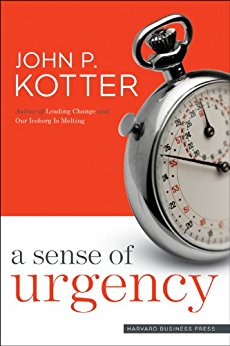The founder of a highly successful company was asked what it took to succeed. He answered: “The same thing it took to get started; a sense of urgency about getting things done.”
The people who make things happen share the same sense of urgency. Ask any entrepreneur to list the keys to getting their company off the ground, and urgency will be among the traits listed.
No matter how intelligent or able you may be, if you don’t have a sense of urgency you better start developing it now. The world is full of competent people who honestly intend to do things tomorrow; however, tomorrow seldom comes for them. Many individuals with less talent are more successful because they understand the importance of urgency. In other words, get started now.
The downfall for many people and companies is that once they are successful, complacency sets in. They are comfortable and satisfied with the status quo. Complacency is the enemy of urgency. Things don’t happen by sitting back. Things don’t happen by watching and waiting for others.
 John Kotter, Harvard Business School professor and author of “A Sense of Urgency,” says that keeping up urgency is a challenge because leaders must create it over and over. It must be embedded in your culture. Companies are vulnerable for complacency to set in.
John Kotter, Harvard Business School professor and author of “A Sense of Urgency,” says that keeping up urgency is a challenge because leaders must create it over and over. It must be embedded in your culture. Companies are vulnerable for complacency to set in.
He advises that the key for leaders in maintaining a sense of urgency is “to value the capacity to appreciate unexpected opportunities. This focus results in work that is highly leveraged, meaningful work, a culture that is satisfying to heart and mind, and an organization that continues to succeed in a changing world.”
So the challenge shifts to keeping employees motivated and determined to succeed.
According to Gallup’s “State of the American Workplace Report,” published in 2013, only 30 percent of employees are actively committed to doing a good job. These are your engaged employees who have passion and a profound connection for their company. Unfortunately 50 percent of employees only put in their time and are essentially “checked out.” The remaining 20 percent are actively disengaged employees who are counterproductive and negatively influence others.
Another problem is false urgency, where you have a lot of activity without productive results. John Kotter explains: “False urgency is rooted in anger and anxiety … This anger creates conflict, battles and a lot of meetings. It is often created by pressure from above, with actions that are not aimed at the root cause or real solutions.”
True urgency is focused on accomplishing something important each day. Urgency is not driven by fear, but rather by a deep determination.
Bill Gates, the founder of Microsoft, talked about urgency in his book, “The Road Ahead.” He said the secret to Microsoft’s success was that employees always thought of themselves on the losing side, which made them strive to be number one. That attitude created a sense of urgency which made them work hard to flourish in the highly competitive IT industry.
In today’s entrepreneurial environment, if you don’t move fast, you get run over. Without a sense of urgency, people and businesses just can’t move fast enough. But this is not a new concept.
Centuries ago, Leonardo da Vinci said, “I have been impressed with the urgency of doing. Knowing is not enough; we must apply. Being willing is not enough; we must do.”
Legendary pro football coach Vince Lombardi demonstrated a tremendous sense of urgency when he took the helm of the Green Bay Packers. They had a miserable 1-10-1 record in 1958, and at training camp in 1959, he had some stern words for them.
Lombardi said: “Gentlemen, we are going to have a great football team. We are going to win games. Get that? You are going to learn to block, run and tackle. You are going to outplay all the teams that come up against you. Get that?”
And then he explained his sense of urgency: “You are to have confidence in me and enthusiasm for my system. Hereafter, I want you to think of only three things: your home, your religion, and the Green Bay Packers, in that order! Let enthusiasm take hold of you, beginning now!”
Virtually the same players as the year before went on to win seven games that year, a division title the next year, and a NFL championship the third year. The renewed passion for the game, fueled by their new-found urgency, produced astounding results.
Mackay’s Moral: If it’s worth doing, do it now!

